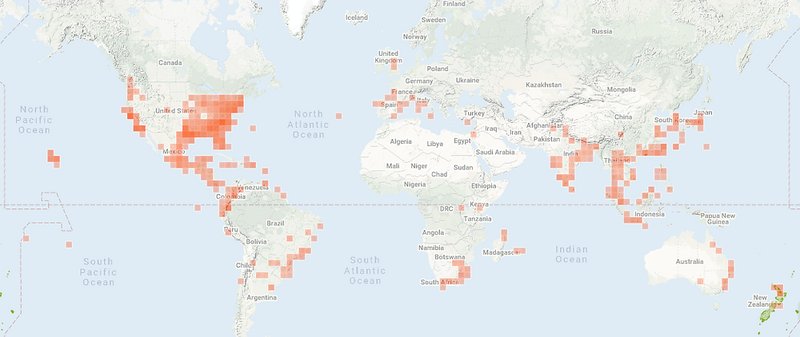
Hammerhead worms, scientifically known as *Bipalium*, are fascinating creatures of the earth. These worms not only have a unique appearance but also play a significant role in their ecosystems. However, their range isn’t infinite. Various climatic conditions shape where these worms can survive and thrive. Let’s dive into how temperature, moisture, and even human activities play into the habitats of these curious organisms.
Understanding Hammerhead Worms
Before we explore the impact of climate, let’s take a closer look at what hammerhead worms actually are. These creatures belong to the class Turbellaria within the phylum Platyhelminthes and are known for their distinctive head shape, resembling a hammer or spade.
Hammerhead worms are carnivorous and predominantly feed on earthworms, slugs, and other small invertebrates. They can be quite beneficial as they help control pest populations in gardens and ecosystems. However, their invasive tendencies in some regions have raised concerns about local species being outcompeted.
You might be wondering how they move about and where they choose to live. Hammerhead worms are mostly found in moist, tropical environments, but they can adapt to various climates. This adaptability is largely influenced by the temperature and humidity of their surroundings.
The Role of Temperature
One of the most significant factors that dictate hammerhead worm ranges is temperature. These worms prefer warmer climates, often found in regions where temperatures consistently hover between 20°C to 30°C (68°F to 86°F).
Why is that important? Well, temperature affects not just their survival but also their reproduction rates. Warmer conditions often lead to higher reproductive rates, allowing populations to flourish. In colder climates, however, they struggle to thrive. They may enter a state of dormancy or even die off when temperatures drop significantly below their comfort zone.
Interestingly, varying temperature extremes can also shape their behavior. For instance, during hot spells, you might notice increased worm activity as they wriggle through the soil, searching for moisture.
Moisture and Humidity’s Impact
Besides temperature, moisture is another crucial element for hammerhead worms. They thrive in humid environments, as they need moisture to survive. You can think of humidity as their “water supply”—without it, their thin bodies can dry out quickly.
Hammerhead worms are often found in tropical rainforests, wet gardens, and areas with rich organic matter. When the air is dry, especially in arid climates, these worms will struggle to find a suitable habitat. They may burrow deep into the ground or seek shelter under leaves to retain moisture.
In contrast, excessive moisture can also pose a problem. If an area experiences prolonged flooding, hammerhead worms may be washed away or displaced from their habitat. Finding that sweet balance of moisture is essential for their survival.
Human Activities and Their Effect
Let’s talk about how human activities can change the game for hammerhead worms. Urbanization, agriculture, and climate change all play roles in shaping their habitats.
For example, when natural areas are cleared for farming or development, it disrupts the delicate ecosystems where these worms live. Fields and gardens that were once lush and moist may become dry, making it difficult for hammerhead worms to survive.
Additionally, climate change is causing temperatures and rainfall patterns to shift. These changes can lead to hotter temperatures and unpredictable weather, which can directly impact where hammerhead worms can thrive. As their preferred habitats shrink, these worms might either migrate to new areas or face severe population declines.
Regional Variations in Hammerhead Worm Populations
You may be curious about where to find hammerhead worms across different regions. Their populations are heavily influenced by the climate of specific areas. In tropical regions, like parts of Southeast Asia, hammerhead worms can be abundant due to the warm and humid conditions.
In contrast, temperate regions may host fewer hammerhead worms. Here, the cooler temperatures and seasonal variations limit their range. While some may adapt to these conditions, they might not reach the same population levels as in tropical climates.
In the case of more arid regions, hammerhead worms are often scarce. The lack of moisture and higher temperatures create an environment that’s not conducive to their survival. This is why these worms are typically concentrated in areas with rich soils and ample humidity.
The Future of Hammerhead Worms
As we look ahead, the future of hammerhead worms is closely tied to the climate. If temperatures continue to rise globally, we might see these worms expanding into new areas, particularly regions that are now too cold or dry for them. This could lead to a shift in local ecosystems, as they may outcompete native species.
However, increased temperatures can also bring risks. Extreme heat or droughts can threaten their populations, causing local declines. The balance of moisture and temperature is delicate, and any significant shifts could dramatically change the landscape for these worms.
In conclusion, hammerhead worms are incredible creatures whose survival depends largely on climate. Understanding their relationship with temperature, moisture, and human impact helps us appreciate the complex interplay of life in our ecosystems. As we strive for a sustainable future, recognizing how our actions influence such organisms is crucial—not just for hammerhead worms, but for the health of our planet as a whole.
